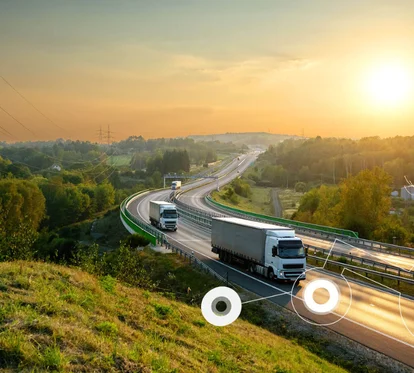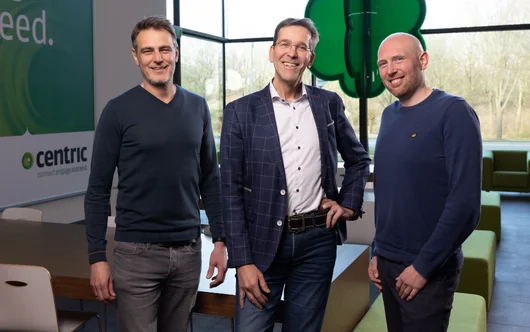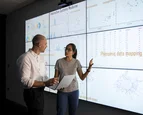The founders of Opt1dev, originally focused on route optimization for passenger and target group transportation, discovered that their advanced algorithms can also be effectively applied to freight transportation. This leads to significant efficiencies, with savings of up to 20 to 30 percent in kilometers and service hours compared to manually planned routes.
Your model is to make road transport more sustainable. Can you tell us something about this?
Frank: "With the algorithm in our planning engine, transport companies can save on fuel and the number of vehicles they use. They also save on service hours for drivers and planners and have a schedule that statistically best matches the order commitments. Because it also saves on mileage, and thus fuel, it also contributes to making transport more sustainable.”
Arthur: “Our passion is optimizing transportation, and in many cases that automatically leads to sustainability in the form of lower CO2 footprints. Personally, it really does make me happy when we can contribute to sustainability.”
What aspects, among others, does the model rely on?
Arthur: “The most important for us are the kilometers saved. That's also where you see the sustainability aspect most clearly.”
Frank: “Another aspect is vehicles. What vehicles should you deploy to operate as optimally as possible? This also means we are increasingly looking at what percentage of trips we can schedule on zero-emission vehicles.”
Arthur: “And then there are load factors and the specific requirements of orders. If you can apply more flexibility within an order, you can combine more efficiently.”
And when it comes to dynamic aspects, traffic situations for example?
Arthur: “An accident, for example, is of course unpredictable. Road works are. That's something we can take into account. The same goes for recurring traffic jams. Everyone knows that if you have to be in the center of Rotterdam at 9 a.m. in the morning, you must reckon with a longer travel time.”
How does the model work in practice?
Arthur: "We offer this as 'planning as a service'. We have a basic algorithm that solves a Vehicle Routing Problem with Time Windows (VRPTW): a well-known challenge around finding the most efficient routes for a number of vehicles, given a set of customers to visit at a given time. In our model, this includes commodity characteristics, loading/unloading aspects and fleet. For each use case, we build a kind of custom subsolvers here. Below this is a generic attribute layer, which allows you to seal off all combinations that are and are not allowed. These are the so-called constraints. Depending on these constraints, we build the solvers. Concrete examples are the time windows, or where the truck must end at night, because the truck must be reloaded that same night."
How much efficiency gain can the model bring transportation companies?
Frank: "Simulations show an efficiency increase of 20 to 30 percent in mileage. In practice, of course, you may encounter constraints that require adjustments, but if you're left with 10 percent efficiency, that's still huge. Besides, transportation optimization is becoming an increasingly difficult task for humans to perform. This is due to such things as environmental zones, time windows, specific attributes and other requirements. So manual planning is becoming increasingly complex, which also makes it more difficult to do it in an efficient way."




